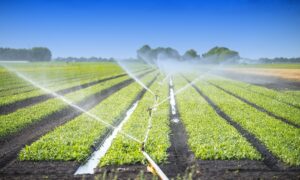
In the era of digital agriculture, satellite imagery has emerged as a powerful tool for monitoring crop health, optimizing agricultural practices, and enhancing productivity. By providing valuable insights into crop growth, stress levels, and environmental conditions, satellite imagery facilitates informed decision-making and precision agriculture techniques. This article explores the pivotal role of satellite imagery in crop health monitoring and precision agriculture, with a focus on its applications, benefits, and contributions to crop outlook assessments.
Understanding the Significance of Crop Health Monitoring
Crop health monitoring is a critical component of agricultural management, encompassing the assessment of plant growth, vigor, and stress levels throughout the growing season. By monitoring crop health indicators such as leaf chlorophyll content, canopy temperature, and vegetation indices, farmers and agronomists can identify areas of concern, implement timely interventions, and optimize resource allocation to maximize yields and profitability.
The Evolution of Satellite Imagery in Agriculture
Satellite imagery has revolutionized the field of agriculture by providing a bird’s-eye view of crop fields and landscapes on a global scale. Moreover, over the years, advancements in satellite technology, sensor resolution, and data processing capabilities have enhanced the quality, frequency, and accessibility of agricultural imagery. Today, thanks to these advancements, satellite-based monitoring systems offer high-resolution imagery, multi-spectral bands, and near real-time updates. Consequently, this enables farmers and researchers to monitor crop health dynamics with unprecedented detail and accuracy.
Applications of Satellite Imagery in Crop Health Monitoring
1. Vegetation Monitoring: Satellite imagery provides valuable insights into vegetation dynamics, including crop growth, development, and phenology. By analyzing spectral reflectance patterns captured by satellites, researchers can assess crop health indicators such as leaf area index (LAI), chlorophyll content, and biomass accumulation, allowing for early detection of stress factors such as nutrient deficiencies, water stress, and pest infestations.
2. Yield Prediction: Satellite imagery is utilized in yield prediction models to estimate crop yields based on factors such as vegetation indices, weather data, and soil characteristics. By correlating satellite-derived metrics with ground-based observations and historical yield data, researchers can develop predictive models that help farmers anticipate crop yields, plan harvests, and make informed marketing and investment decisions.
3. Pest and Disease Monitoring: Satellite imagery plays a crucial role in the detection and monitoring of pest and disease outbreaks in agricultural fields. Moreover, by scrutinizing alterations in vegetation indices and spectral signatures linked to pest damage or disease symptoms, researchers can pinpoint affected areas. Consequently, they can gauge the severity of infestations and subsequently execute targeted pest management strategies. This not only helps mitigate crop losses but also minimizes environmental impacts.
4. Resource Management: Satellite imagery supports precision agriculture practices by optimizing resource management decisions, including irrigation scheduling, fertilizer application, and crop rotation planning. By mapping spatial variability in crop health indicators and soil properties, farmers can tailor input applications to specific field conditions, reduce input costs, and improve overall efficiency and sustainability.
Benefits of Satellite Imagery in Precision Agriculture
1. Additionally, Remote Sensing Coverage: Satellite imagery provides comprehensive coverage of agricultural landscapes. This technology allows for the monitoring of large-scale crop fields and regions that may be inaccessible or difficult to survey using traditional ground-based methods.
2. Moreover, Timely and Cost-Effective: Satellite imagery offers timely updates and cost-effective solutions for crop monitoring. This eliminates the need for frequent field visits and manual data collection. By leveraging satellite-based monitoring systems, farmers can access up-to-date information on crop health conditions without incurring significant time or expenses.
3. Data Integration and Analysis: Satellite imagery can be integrated with other data sources, such as weather data, soil maps, and crop management records, to enhance the accuracy and reliability of crop health assessments. Advanced data analytics techniques, including machine learning and artificial intelligence, enable researchers to extract actionable insights from satellite-derived imagery and develop predictive models for precision agriculture applications.
4. Scalability and Accessibility: Satellite imagery is scalable and accessible to farmers and researchers worldwide, providing a standardized platform for crop health monitoring and decision support. With the increasing availability of open-access satellite data and cloud-based analytics platforms, users can access and analyze imagery from anywhere, at any time, empowering them to make data-driven decisions for improved crop management.
Contribution of Satellite Imagery to Crop Outlook Assessments
Crop outlook assessments offer valuable insights into future crop production levels, market trends, and food security implications. Furthermore, satellite imagery plays a crucial role in these assessments by providing timely updates on crop conditions, yield potential, and environmental factors that influence production outcomes. Consequently, by monitoring key crop health indicators and trends over time, satellite-based assessments assist policymakers, traders, and stakeholders in anticipating supply-demand dynamics, mitigating market risks, and supporting informed decision-making in agricultural markets.
Future Directions and Innovations
As technology continues to advance and agricultural challenges evolve, there is growing potential for innovation and integration of satellite imagery in crop health monitoring and precision agriculture:
1. High-Resolution Imagery: Moreover, advancements in satellite sensor technology are leading to the development of high-resolution imaging systems, consequently enabling the capture of detailed information at sub-meter scales. With this technology, researchers can monitor individual crop plants, detect subtle changes in vegetation health, and analyze field-level variability with unprecedented precision.
2. Hyper-Spectral Imaging: Hyper-spectral imaging techniques, renowned for their ability to capture spectral information across hundreds of narrow wavelength bands, offer enhanced capabilities for characterizing crop health indicators and discriminating between different crop types, varieties, and stress factors. Moreover, by analyzing hyper-spectral data, researchers can gain deeper insights into biochemical processes, nutrient status, and disease signatures within crops, thereby facilitating more targeted interventions and management strategies.
3. Integration with Unmanned Aerial Vehicles (UAVs): By integrating satellite imagery with UAV-based remote sensing platforms, researchers gain the advantage of capturing high-resolution imagery at customizable spatial and temporal scales. Furthermore, UAVs equipped with multi-spectral sensors and high-resolution cameras enhance the capacity for real-time data collection, targeted surveys, and precise monitoring of crop health dynamics. This integration offers greater agility and precision, effectively complementing satellite-based monitoring systems.
4. Data Fusion and Modeling: The integration of satellite imagery with ground-based sensor networks, IoT devices, and weather forecasts facilitates the development of holistic crop monitoring systems. This integration allows researchers to capture multi-scale dynamics and interactions within agricultural ecosystems more comprehensively. Furthermore, by fusing diverse data sources and employing advanced modeling techniques, researchers can significantly improve the accuracy, reliability, and timeliness of crop health assessments. As a result, these advancements support the adoption of more resilient and sustainable agricultural practices.
Conclusion
Satellite imagery plays a pivotal role in crop health monitoring and precision agriculture, offering valuable insights into crop growth, stress levels, and environmental conditions on a global scale. Additionally, it facilitates monitoring vegetation dynamics and predicting crop yields, thereby supporting pest management and resource optimization efforts. Consequently, by harnessing the power of satellite imagery, stakeholders can enhance crop outlook assessments, mitigate market risks, and support food security initiatives, ultimately contributing to a more resilient and sustainable agricultural future.




